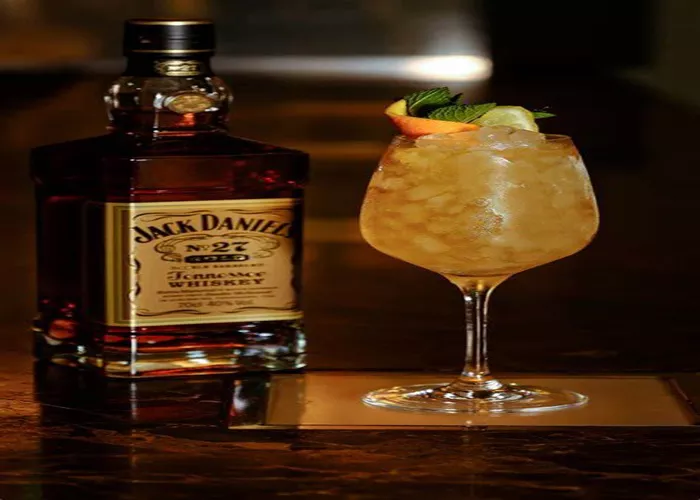Taste
1. Flavor Profile
The taste of a cocktail is perhaps the most crucial aspect. A great cocktail should have a well-balanced flavor profile that combines different elements to create a harmonious and enjoyable experience.
This includes a combination of sweet, sour, bitter, and savory flavors. For example, a classic Margarita has the sweetness of triple sec and the sourness of lime juice, balanced by the salt on the rim and the tequila’s earthy undertones.
Bartenders use a variety of ingredients to create different flavor combinations, such as fruits, herbs, spices, syrups, and liqueurs.
2. Ingredients Quality
The quality of the ingredients used in a cocktail is essential for its taste. High-quality spirits, fresh fruits, and homemade syrups can make a significant difference in the final product.
Spirits should be of good quality and not have any off-flavors or impurities. Fresh fruits and herbs add a vibrant and natural flavor to the cocktail.
Homemade syrups and infusions can also add a unique touch to the cocktail, as they can be customized to suit the bartender’s or the customer’s taste.
3. Technique
The way a cocktail is made also affects its taste. Bartenders use different techniques such as shaking, stirring, muddling, and blending to combine the ingredients and create the desired texture and flavor.
Shaking is used to mix ingredients thoroughly and create a frothy texture. Stirring is used for cocktails that require a more delicate touch and a clear appearance. Muddling is used to extract the flavors from fruits and herbs. Blending is used for frozen cocktails or cocktails that require a smooth texture.
The temperature of the ingredients and the glassware also plays a role in the taste of the cocktail. Cold ingredients and chilled glassware can enhance the flavors and make the cocktail more refreshing.
Presentation
1. Glassware
The choice of glassware can enhance the visual appeal of a cocktail and set the tone for the drinking experience. Different cocktails are served in different types of glasses, depending on their ingredients and style.
For example, a Martini is typically served in a martini glass, which has a long stem and a conical shape. A Margarita is served in a salt-rimmed glass with a wide mouth, which allows the drinker to enjoy the flavors and aromas of the cocktail.
Glassware can also be decorated with garnishes, such as fruits, herbs, or edible flowers, to add a touch of elegance and creativity.
2. Garnishes
Garnishes are an important part of the presentation of a cocktail. They not only add visual appeal but also enhance the flavors and aromas of the drink.
Common garnishes include fruits, herbs, spices, and edible flowers. For example, a lime wedge is a classic garnish for a Gin and Tonic, while a sprig of mint is perfect for a Mojito.
Garnishes should be fresh, colorful, and appropriate for the cocktail. They should also be easy to handle and not overpower the drink.
3. Color and Texture
The color and texture of a cocktail can also be appealing to the eye. Bartenders use different ingredients and techniques to create cocktails with vibrant colors and interesting textures.
For example, a blueberry-infused cocktail can have a beautiful purple color, while a frozen Margarita can have a smooth and creamy texture.
The color and texture of a cocktail should be in harmony with its flavor and presentation, creating a complete sensory experience.
See Also: The Top 3 Ways to Make Delicious Cocktails
Balance
1. Alcohol Content
The balance of alcohol in a cocktail is crucial for its enjoyment. A cocktail that is too strong can be overpowering and unpalatable, while a cocktail that is too weak can lack flavor and character.
Bartenders use different spirits and mixers to create cocktails with the desired alcohol content. They also take into account the drinker’s tolerance and preferences when making a cocktail.
The alcohol content of a cocktail can be adjusted by adding more or less spirits, or by using mixers with different alcohol levels.
2. Sweetness and Acidity
The balance between sweetness and acidity is another important aspect of a cocktail. A cocktail that is too sweet can be cloying, while a cocktail that is too sour can be unappealing.
Bartenders use different sweeteners and acids to create cocktails with the right balance of sweetness and acidity. For example, simple syrup is a common sweetener, while lemon juice or lime juice is a common acid.
The sweetness and acidity of a cocktail can also be adjusted by adding more or less of these ingredients, or by using different fruits or juices.
3. Flavor Harmony
The different flavors in a cocktail should work together in harmony to create a pleasant and enjoyable experience. A cocktail that has conflicting flavors or is too busy can be difficult to drink.
Bartenders use different ingredients and techniques to create cocktails with a harmonious flavor profile. They also take into account the seasonality and availability of ingredients when creating a cocktail.
The flavor harmony of a cocktail can be adjusted by adding or subtracting ingredients, or by changing the proportions of the different elements.
Conclusion
You might be interested


